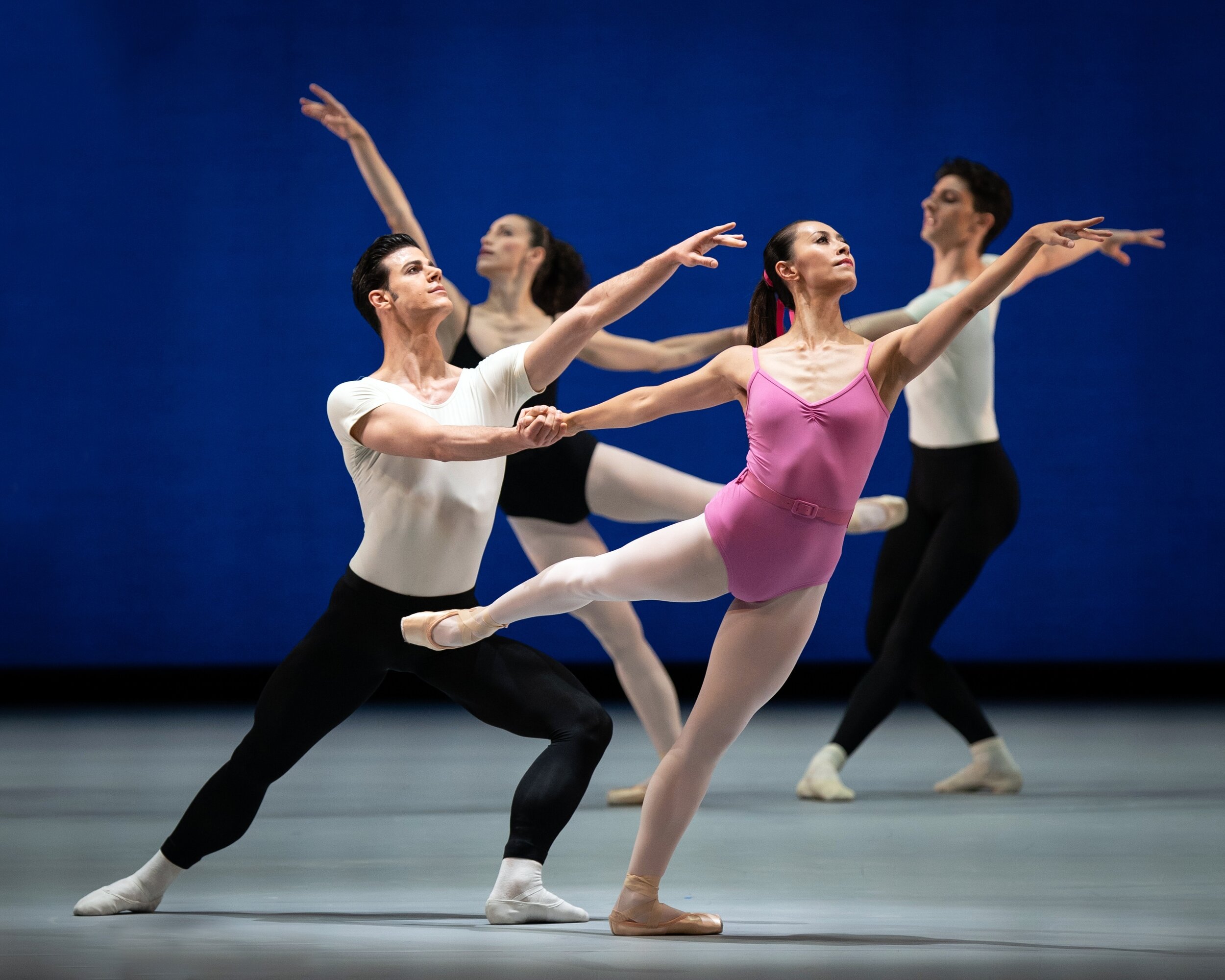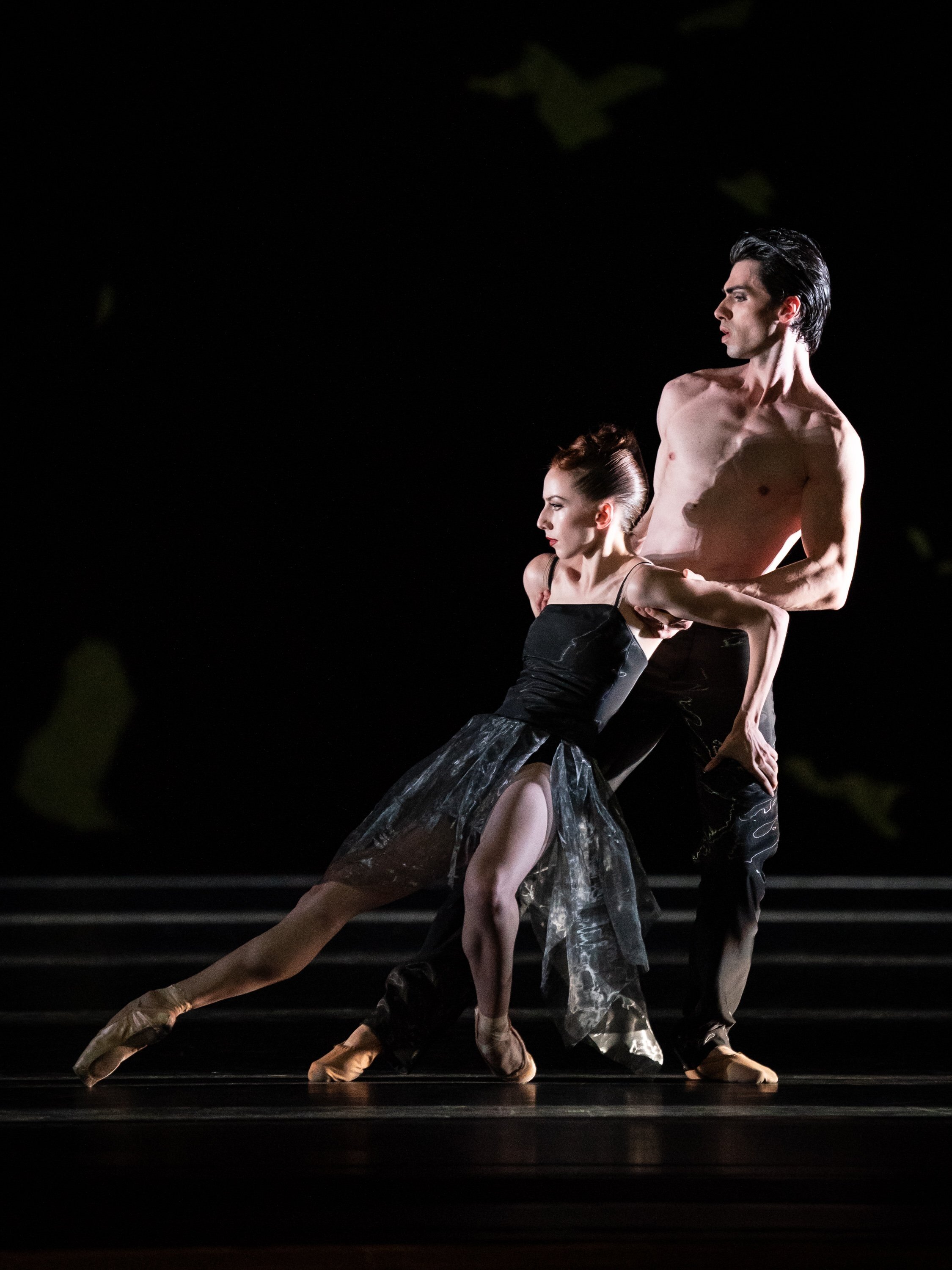Dances - Pictures - Symphonies (Tänze Bilder Sinfonien): Vienna State Ballet, September 17th, 2021
When I think of the present situation of the Opera House, I can only say that it is surely not easy to be in Bogdan Roščić's place and position at the moment. The combination of the Corona Pandemic and the intention, nearly a self-imposition of reinventing/creating something new for the image of the most established cultural symbol in the country (and one of the few valuable „visit cards" that Austria possesses to represent us abroad) is not an easy one. Sometimes I wonder why new management teams (in fact, in all sectors of the economy) always insist on the reinvention/creation of something new instead of evaluating the good and positive things that were done before and perfecting them. Vanity? Last Night’s repetition of the „three ballets evening" - a formula so much loved in America, due to a certain cultural deficiency (The Viennese and Tourist audiences prefer narrative ballets) - is not really a big help or a special achievement economically and in terms of occupancy, a problem that must be causing strong headaches. Yesterday's performance shallowly seems to have been well visited but, because of the lack of interest, tickets were/are being sold with a 30% discount for all Ballet performances throughout September so that a certain occupancy can be achieved - with minus 30% incomings…. This situation is quite far from being a satisfactory, rosy one (Especially, this as information to all my readers abroad, because the Vienna State Opera is financed by Taxpayer's money). It is not easy to create something new.
Balanchine's „Symphony in Three Movements" has never belonged to the long list of „my favourite things". Created in 1972, at the time when Balanchine was preparing an „Hommage" to Stravinsky's death Anniversary and their long collaboration, it may (or may not) have been hastily choreographed (I believe that more time was given to „Stravinsky's Violin Concerto", a more mature, consistent piece), containing some parts which can not be seriously interpreted – at the end most of the dancers assume positions as semaphores and warriors at the ready, a Stravinsky's allusion to an Allied victory in World War II. It is so dated that it is nearly ridiculous. Once again I must repeat: It is hard to create something new. “Symphony” falls a bit into the category “museum piece”. But still… it is a Balanchine museum piece and worth seeing!
Copyright: Ashley Taylor / Vienna State Ballet
An interesting cast led with excitement and fun by fleet-footed Maria Yakovleva and Géraud Wielick, dynamic and elegance by the always precise Kiyoka Hashimoto and Davide Dato - whose neckline is „the icing on the cake" for Mr B's vocabulary - and precision and joy especially by Masayu Kimoto. Liudmila Konovalova, always technically wonderful, but never a dancer that looks completely „at ease" in the Balanchine repertoire. That certain „sparkle" so essential in Balanchine's vocabulary, was again missing.
Davide Dato & Kiyoka Hashimoto / Copyright: Ashley Taylor / Vienna State Ballet
Special note to Ioana Avraam. As mentioned in another critique some months ago, completely reinvented and apparently enjoying herself enormously.
Today, at long last, it is a “must” to mention the Corps de Ballet. I have waited for quite a long time to do so to have a better picture of the (many) new faces and of what has been happening since the direction's change (with the mention of the word “direction” I mean not only of the management but also the “course through which someone or something moves”). This is about the new members of the Corps, who have joined the company last year and especially about some who have not yet reached a „professional" level in their dancing: this is quite visible if you take a good look at those who are not only technically unprepared as dancers but also unable to project their presences through the fourth wall – a “necessity" that should be either natural or acquired with experience. I can even accept that homogeneity is “out” (in what looks, height, weight are concerned) but technique? This is a very unusual and unheard of situation in a House that has gradually over the years gained the reputation of having one of the companies with the cleanest technique in Europe!
„Pictures at an Exhibition" is reason enough to buy a ticket for this show. Alexei Ratmansky's work is fresh, intelligent, young, filled with subtleness and constructed with precision, dramaturgical sharpness and extreme musicality. It has been long since I last saw a new work that managed so much to „drive" the audience through a story, that is no story but a bunch of feelings and emotions carefully chosen and portrayed on those Kandinsky's studies that, through their colours and light „insinuations" are more than just appropriate and suitable to Mussorgsky's masterpiece. Joy. Pure joy. It is hard to create something new – and how lucky we are to witness this achievement!
Ketevan Papava / Copyright: Ashley Taylor / Vienna State Ballet
Very good casting. Special mention to Lourenço Ferreira's gentleness and to Ketevan Papava's commanding, show-stealing performance that is a tour-de-force from beginning to end. She manages at the same time also to be subtle, filled with that „I can also laugh about myself" kind of humour, that only intelligent talents possess. Simply grand.
Not on a good day, there was less to no chemistry in the couple formed by Claudine Schoch and Marcos Menha, who, I believe, danced much together in the past. Strangely, their energies did not come together, did not melt in each other. Problems – and I am not talking about the last lift that was quite an effort to achieve.
Ioanna Avraam / Copyright:Ashley Taylor / Vienna State Ballet
But this is just „un contretemps" in a choreography filled also with „tempo": greatly mastered in its quickness by Ioanna Avraam and Arne Vandervelde. Bravo!
A final word about Mr Roman Lazik and his ever-growing presentness on stage: it is always a pleasure to experience Mr Lazik's Art. The only Danseur Noble at the Vienna State Opera, who now bears the title „Senior Artist" but is, on the contrary of the other Senior Artist, „useable" in any kind of roles and styles. And last but not least: The breathtaking costumes by Adeline André are a delightful piece of pure Art.
Shostakovich's „Symphony No. 15" is his last work - Tikhon Khrennikov praised the symphony as "most profound," and "full of optimism and belief in man's inexhaustible strength". I see this differently. The strength was nearly all gone, exhaustion had “settled in” and the shadow of Death and Despair is all over it. Even during its more light first part.
Not as many dancers were used on stage as in Mr Schläpfer’s previous piece which premiered last December. A good thing in times like this (I am referring to the Pandemic). I will not go into details about the cast, as it is quite obvious when reading the dancers' names in alphabetical order in the programme that for Mr Schläpfer the only „Star" of the evening is the choreography. I respect that.
Normally, if I mention costumes at all, I do that at the end of my critique but as I nearly have no words to begin to tell you what I think of Thomas Ziegler's, I decided to do so right now. They are perhaps the ugliest and cheapest-looking ones I have ever seen. Mr Ziegler is also responsible for the gloomy set – greatly emphasized in its gloominess by Robert Eisenstein's lighting.
Unlike some people that have criticized Mr Schläpfer for the „arrogance" of using Balanchine and Ratmansky in this programme as „opening acts" to his own work, I say that this did not bother meI Not at all – and if it is arrogance, well there's nothing I enjoy more than a certain arrogance - but just when it is well-founded and justifiable.
Fiona McGee / Calogero Failla / Copyright: Ashley Taylor / Vienna State Ballet
There are some „hints" that a story is being „told" but it does not come through to the audience. I always refuse to go to „introductory talks to a work" (which took place half an hour before the show), in which it is told what the audience is going to (or should) see (and feel) in the works presented. I believe that if I do not see (or feel) it then there is a problem either in the „story-telling" or in the dramaturgy (it’d be easier to mention the libretto of an Opera… ). Good works do not need to be explained. But that is not a problem, the real problem with this abstract piece is that it consists of many parts that neither fit into each other nor belong together. The choreography was apparently written separately and then „glued, put together" - the evidence to this assertion is more than given when the troupe from the Volksopera, led by the Senior Artiste Yuko Kato, suddenly enters the stage, just mixing a few times with the dancers from the State Opera – an interesting situation when dancers from both companies do not really mix on stage. In this sense, very similar constructed to last December’s Première.
Even though the choreography is at times quite static in extremely dynamic musical moments, it has an interesting approach to the rhythmic line of the symphony. Especially when the movements begin long after the musical phrase has started. I like that because it gives the impression of a kind of hesitation as if the dancers are waiting to understand the musicality of the phrase more completely. Very revealing in a very open way. I like this.
Roman Lazik / Ketevan Papava / Copyright: Ashley Taylor / Vienna State Ballet
But even if packed up in modernity's cellophane - what is no excuse for the vulgarity of a dancer sitting on the crotch of another dancer who is all stretched in a second position on the floor. This is an Opera House, not a tasteless blue movie Cinema! - and with some quite interesting moments, the choreography is still conventional with no kind of innovations, own language and vocabulary. To quote once more today’s Centrepiece: It is hard to create something new. This is a shame - I would have liked to report more positively about Mr Schläpfer’s work.
The applause was moderate but the excitement of a young German couple, sitting beside me, with this piece made me ponder and think of an extremely funny interview with actor Christopher Waltz (in Conan on TBS) in which he compares the difference between the German and the Austrian Mentalities. Let’s put it “politically correct” as “different ways of perception about the same things”.











